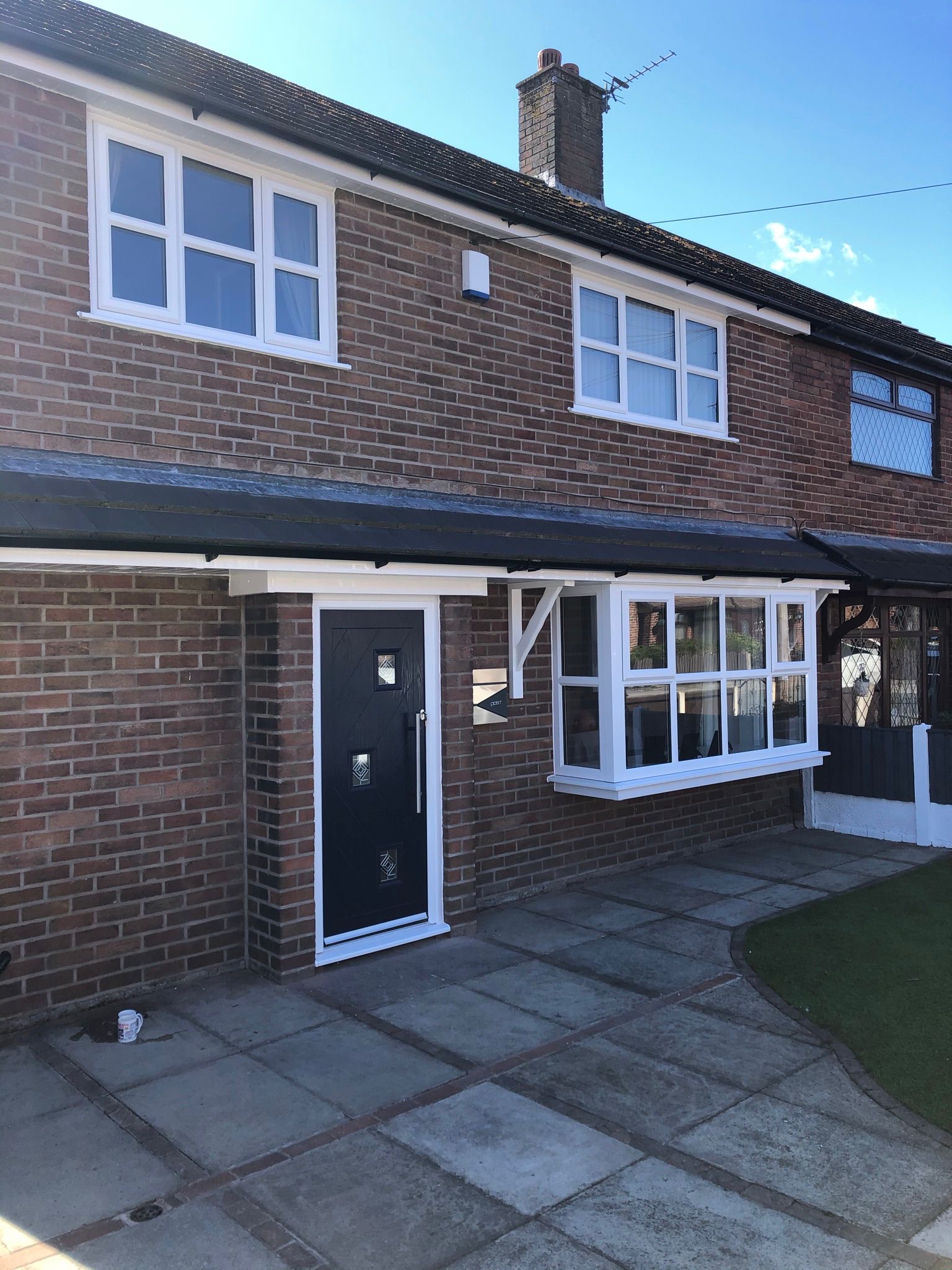
Choosing the right front door is one of the most important decisions you can make as a homeowner. Your door isn’t just the entryway to your home, it’s the first line of defense for security, a major contributor to energy efficiency, and a key part of your property’s curb appeal.
Over recent years, composite doors have surged in popularity, renowned for their superior strength, durability, and aesthetic versatility. But did you know there are multiple types of composite doors available, each offering unique features and benefits? PH Composite Doors are the leading supplier of composite doors offering installation across the North West.
In this comprehensive guide, we’ll explain what composite doors are, explore the main types, and help you decide which option is right for your property. Whether you’re seeking security, style, or energy savings, understanding the different types of composite doors will empower you to make the best choice for your home.
Composite doors are designed to offer the best features of several materials, resulting in a product that’s strong, secure, and highly durable. Unlike traditional timber or uPVC doors, composite doors combine a range of materials such as timber, uPVC, foam, and glass-reinforced plastic (GRP)to maximise performance and longevity.
Now, let’s look at the different types of composite doors and what sets them apart.
One of the most popular types of composite doors is the foam core composite door. At the heart of these doors is a high-density polyurethane foam core. This material makes the door lightweight, yet provides impressive thermal insulation, helping to keep your home warm in winter and cool in summer.
Benefits of Foam Core Composite Doors:
For homeowners seeking maximum security and a premium feel, solid core composite doors are an excellent choice. These doors are constructed with a robust core made from laminated hardwood or solid timber. As a result, they are heavier, denser, and offer superior resistance to forced entry.
Benefits of Solid Core Composite Doors:
Some manufacturers now offer hybrid composite doors, which combine elements of both foam and solid cores or blend materials like aluminium, timber, and uPVC. The aim is to harness the best properties of each material, producing doors that offer balanced performance in security, thermal efficiency, and design flexibility.
Benefits of Hybrid Composite Doors:
Composite doors are not just defined by their core. The outer layers and skin material play a significant role in their durability, appearance, and maintenance requirements. Here are the main material-based types of composite doors:
Most modern composite doors feature an outer skin made from glass reinforced plastic (GRP), commonly known as fibreglass. This material is incredibly tough, weather-resistant, and can be moulded to mimic authentic timber grain. GRP composite doors are prized for their ability to resist dents, scratches, and harsh weather conditions without fading or warping.
Benefits:
If you love the feel of natural wood but want the benefits of modern engineering, timber core composite doors are ideal. These doors use a thick, high-quality hardwood core, encased in protective layers of GRP or uPVC for added insulation and weatherproofing.
Benefits:
A more budget-friendly option, uPVC composite doors feature a core (either foam or timber) surrounded by layers of uPVC. These doors are known for their excellent weather resistance and can be customised to fit a variety of home styles.
Benefits:
A premium option, aluminium-timber composite doors combine the warmth and character of wood with the sleek, modern durability of aluminium. These doors are particularly popular for contemporary homes and high-end renovations.
Benefits:
Composite doors can also be categorised by their style and design features. Whether your home is a period property or a new-build, there’s a composite door style to match your aesthetic.
Classic panelled designs, often featuring decorative glass or authentic wood grain effects, make these doors ideal for period homes or cottages. Traditional composite doors combine old-world charm with modern security and energy efficiency.
Sleek lines, minimalist hardware, and bold colours define contemporary composite doors. Perfect for modern properties, these doors often include larger glazed panels or metallic accents for a striking entrance.
Want to let in more light? Glazed composite doors feature one or more panels of toughened or double-glazed glass. Options range from frosted to decorative, stained, or patterned glass, giving you privacy without sacrificing style.
Many homeowners ask how composite doors stack up against other popular options. Here’s how they compare:
With so many types of composite doors available, how do you choose the right one? Consider these key factors:
Pro tip: Always ensure your new door meets or exceeds local building regulations for security and thermal performance.
With so many types of composite doors available, you’re sure to find the perfect fit for your home’s style, security needs, and budget. Whether you favour the strength of a solid core, the efficiency of a foam core, or the modern edge of hybrid designs, composite doors provide unbeatable performance and kerb appeal. Ready to upgrade your entrance? Explore our range of composite doors or contact us today for expert advice on choosing the best type of composite door for your property.
At PH Composite Doors, we pride ourselves on helping every customer find the ideal door solution, from initial consultation through to professional installation and aftercare. With years of experience and a passion for quality, our team is here to guide you at every stage, ensuring your new composite door perfectly complements your home. Visit our website to discover how we can support your next home improvement project.
